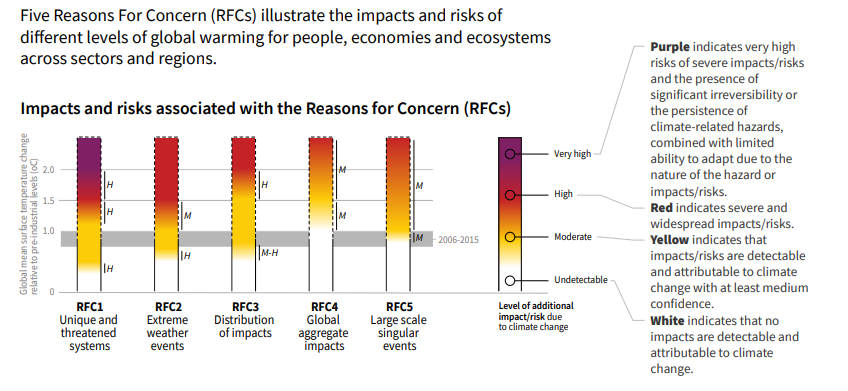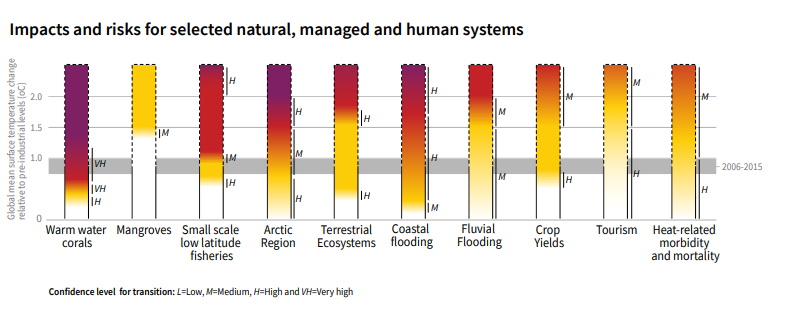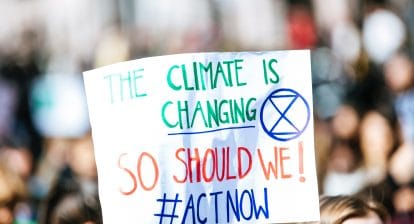The UN’s Intergovernmental Panel on Climate Change (IPCC) issued its Special Report on the impacts of global warming in South Korea in October 10, 2018. The Panel was requested to publish the Special Report by the Conference of Parties to the UNFCCC in its 21st session during which the Paris Agreement was signed (2015).
It outlines “ the impacts of global warming of 1.5 °C above pre-industrial levels and related global greenhouse gas emission pathways, in the context of strengthening the global response to the threat of climate change, sustainable development, and efforts to eradicate poverty”.
When the Paris Agreement was signed, countries agreed to two goals: to limit warming to 2 degrees Celsius, and to try to achieve a lower target of 1.5 degrees Celsius from pre-industrial times, at the urging of vulnerable countries.
The thing is, temperatures have already increased by 1 degree Celsius since pre-industrial times, so we don’t really have a lot of space to manoeuver. There is only about half a degree left to reach the maximum. The Report maintains that there is no definitive way to limit temperature rise to 1.5 degrees Celsius above pre-industrial times. And even the 2 degrees Celsius goal seems unlikely based on the pledges countries made at the Paris Agreement. It concluded that the greenhouse gas reduction pledges under the Paris agreement will not be enough to avoid 3.6 degrees of warming.

Global Warming data from the IPCC
“Global warming is likely to reach 1.5 degrees Celsuis between 2030 and 2052 if it continues to increase at the current rate,” the report states.
To limit warming to the lower goal would require unprecedented changes on how we approach energy systems, land use, city and industrial design, transportation and building use. Annual Carbon dioxide emission levels are still rising. They would have to drop to half by 2030 and zero by 2050. Emission from methane also need to be curtailed, which have also been rising steadily. At the current rate of greenhouse gas emissions, the atmosphere will warm to almost 3 degrees Celsius above pre-industrial levels by 2040.
“Climate-related risks to health, livelihoods, food security, water supply, human security and economic growth are projected to increase with global warming” the report said. The world’s poor are likely to be drastically impacted by this.

Coral reefs and other important ecosystems on which we rely, are also at highly threatened. Sea levels will continue to rise and droughts and floods are likely to get more intense. The Report studied 105,000 species and specified that 6% of insects, 8% of plants and 4% of vertebrates will lose half their habitat with a temperature increase of 1.5 degrees Celsius. Those proportions double with a 2 degree gain.

To add to this, earlier this year another report, this time by Intergovernmental Science-Policy Platform on Biodiversity and Ecosystem Services (IPBES) has painted an even more devastating picture. This showed that up to one million species could be lost in the coming decades. In the last 50 years, increasing population and need for natural resources has led to a level of extraction never before seen in our history; whether on the land or the sea. And the refuse from our activities has impacted land, sea, as well as the sky.
(Check out my VLOG on The Year in Climate 2019)
Basically, there needs to be an annual investment of USD 2.4 trillion in clean energy to achieve the 1.5 degrees Celsius goal by 2030. By 2050, use of coal as an electricity source would have to drop from nearly 40% today to between 1–7%. Renewable energy such as wind and solar, make up about 20% of the global electricity mix today. This would have to increase to as much as 67%. And now there is a growing consensus that next 18 months will be absolutely crucial in order to deal with not only the global warming crisis but the other environmental challenges as well.
Some of the things that can be done are planting billions of trees and using the technology we already have to suck out carbon from the air and store it underground, in addition to drastically curtailing our use of fossil fuels. We also need to make changes to the way we develop and use agriculture, forestry, marine systems, freshwater systems and urban areas. And of course making lifestyle changes, moving from “use and throw” behaviour to recycling and reusing among other things. Some countries, including the UK have and legislated for net zero emissions by 2050 and the UK has also announced that it would mandate net gains for biodiversity in the Environment Bill.
All these reports and observations are a clarion call, telling us that we do not have a choice anymore. We must adopt more sustainable systems for our own survival. It is time to wake up.








Annette, 3 Little Buttons
It’s definitely time to wake up and do every little bit possible to help the cause. It seems like an impossible task, but so necessary. Thank you for sharing this with the #dreamteam linky.